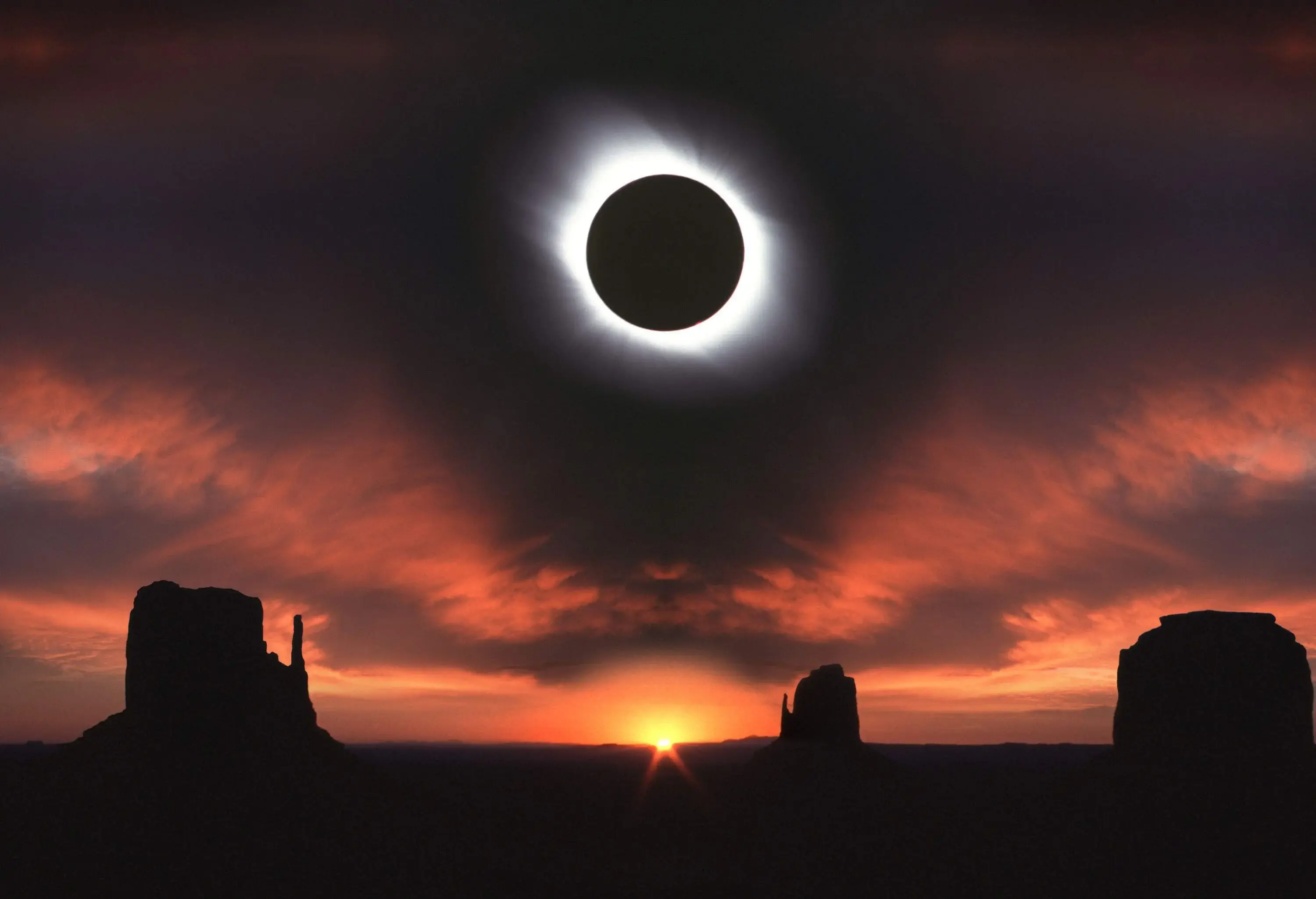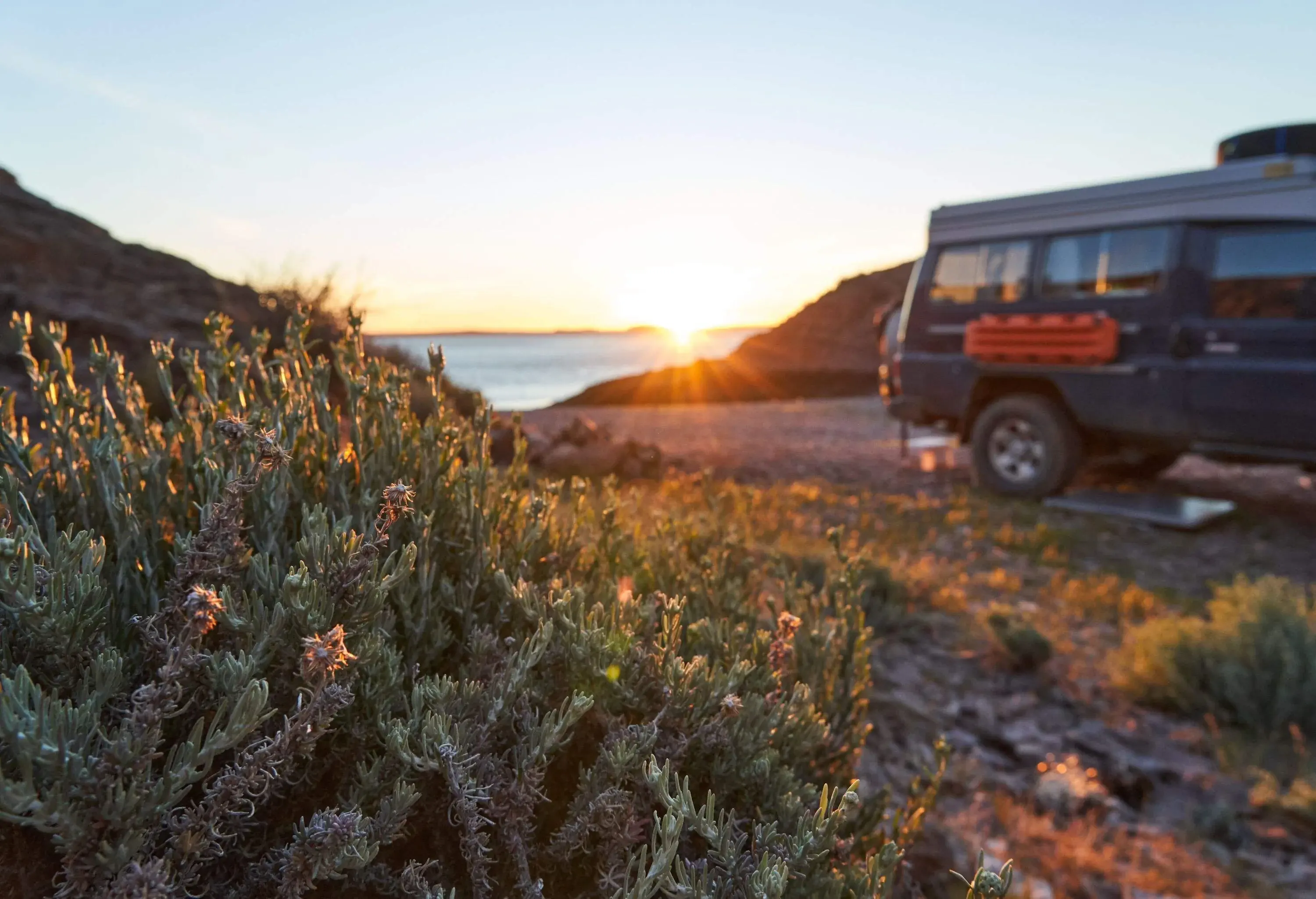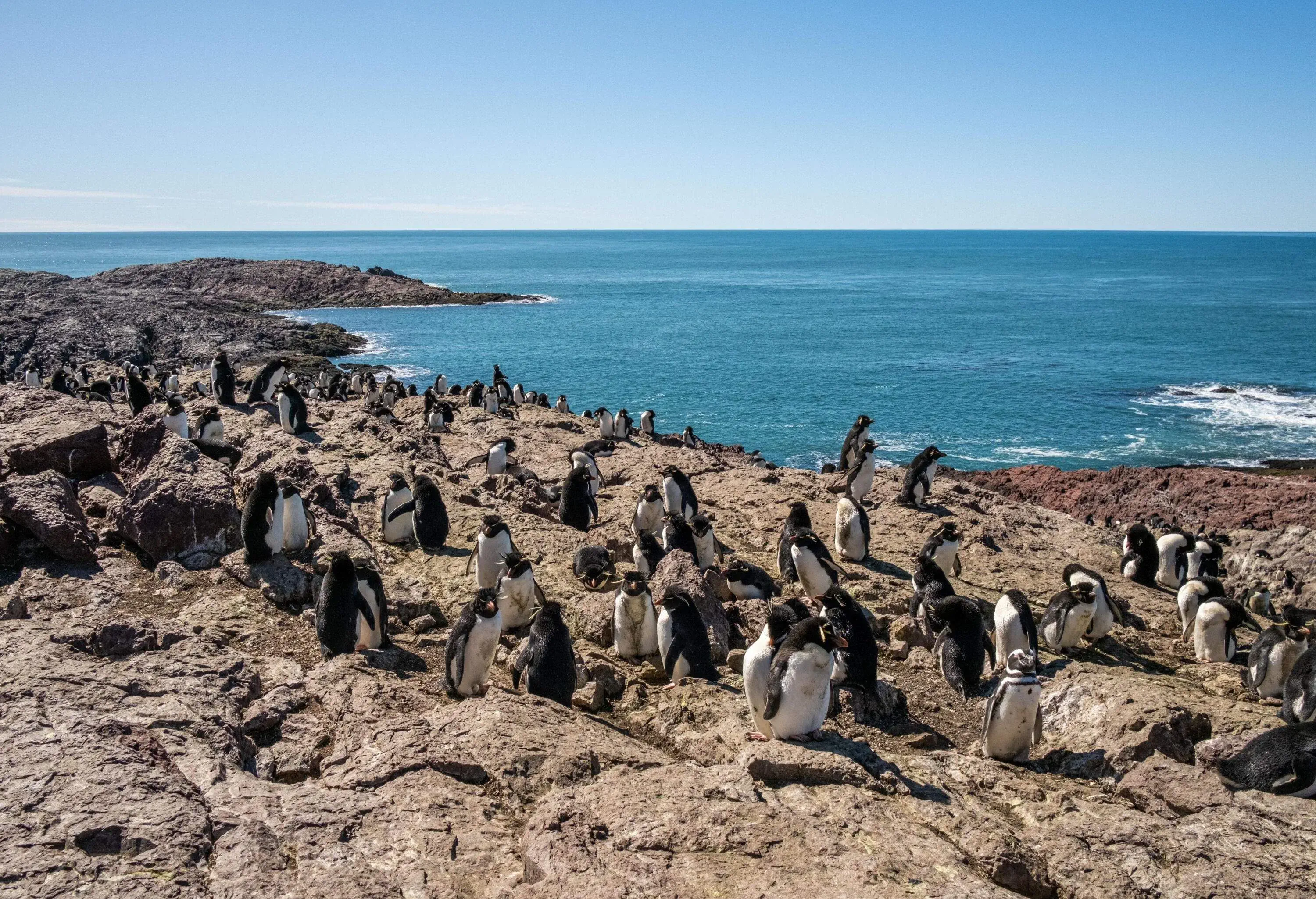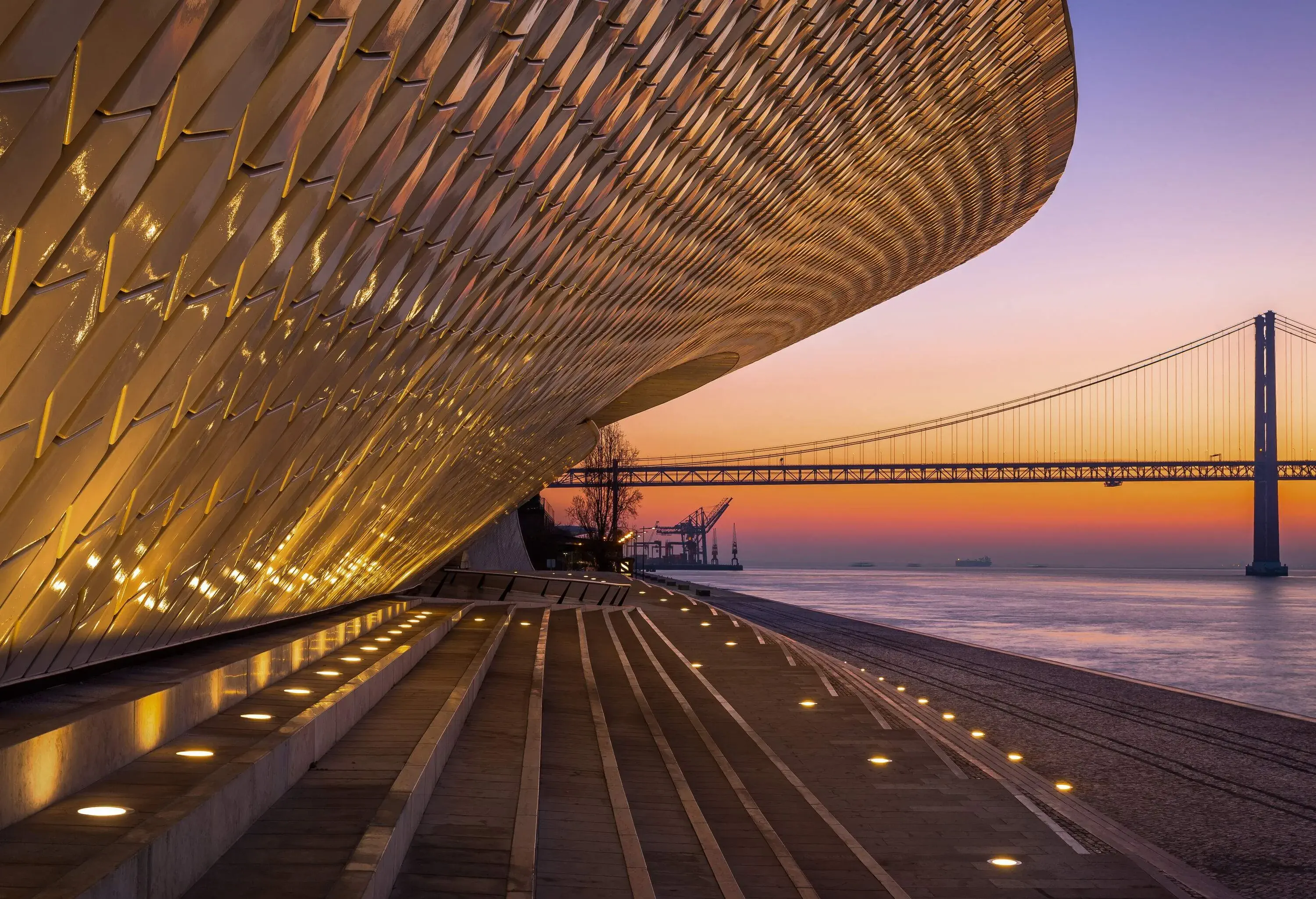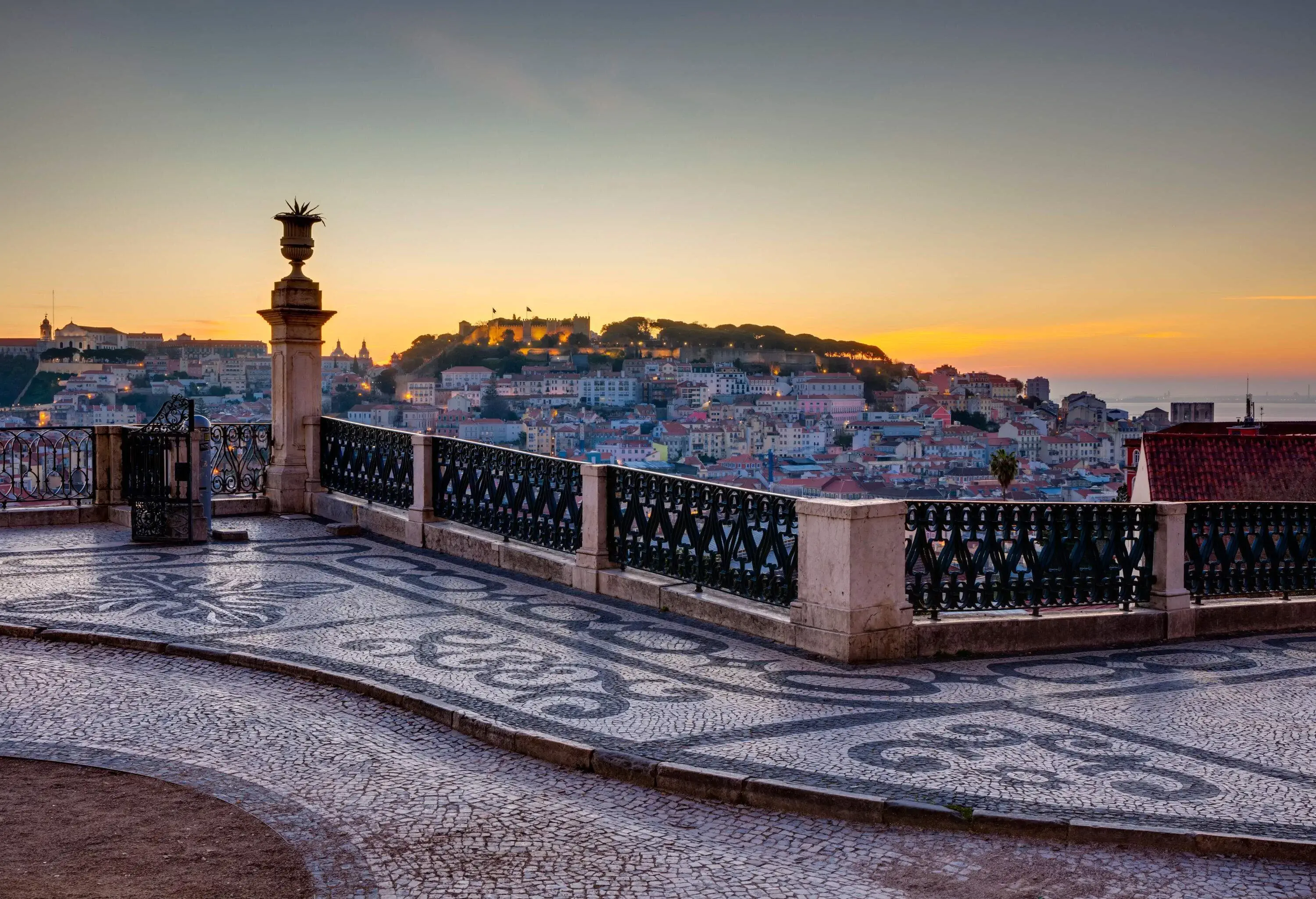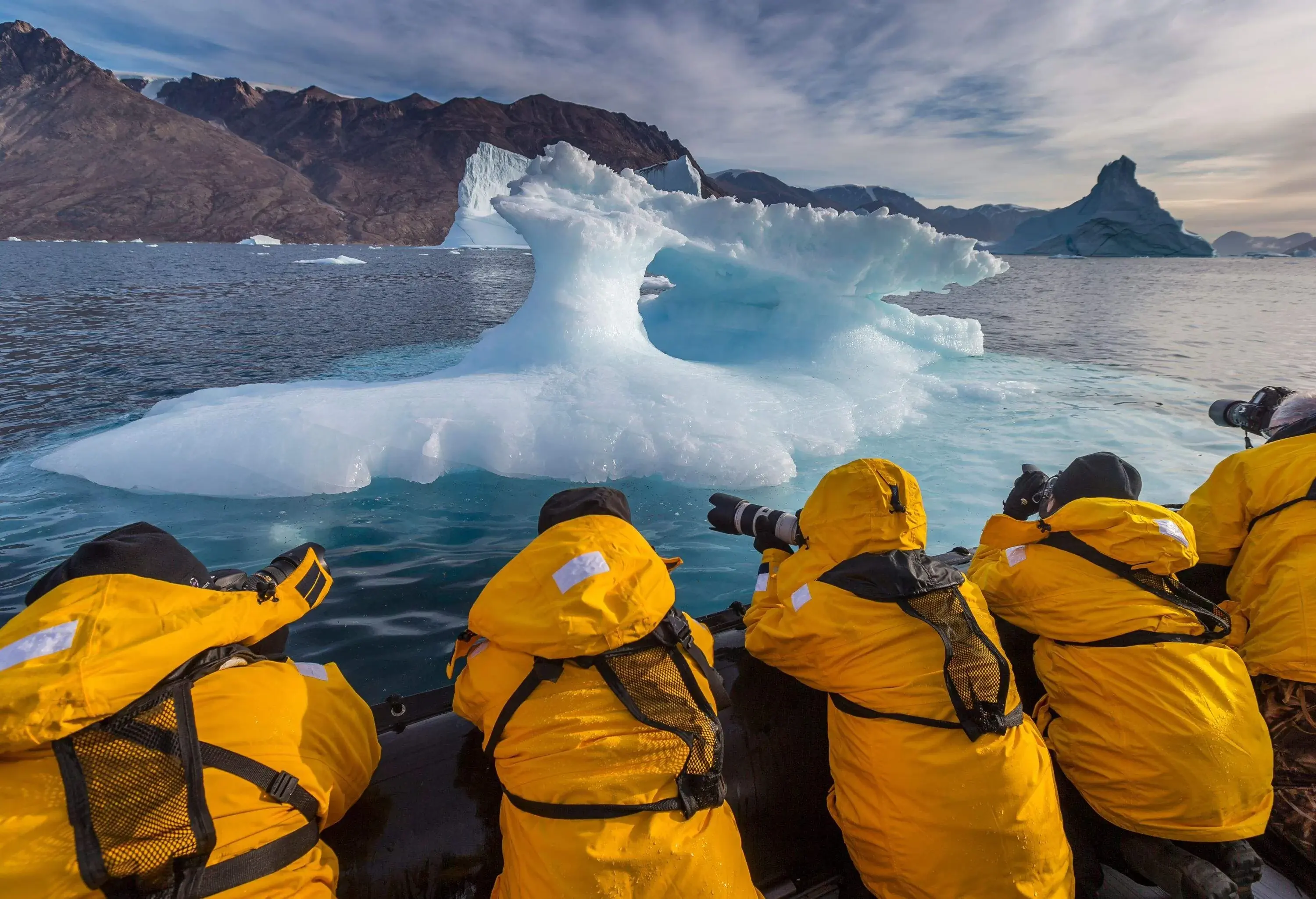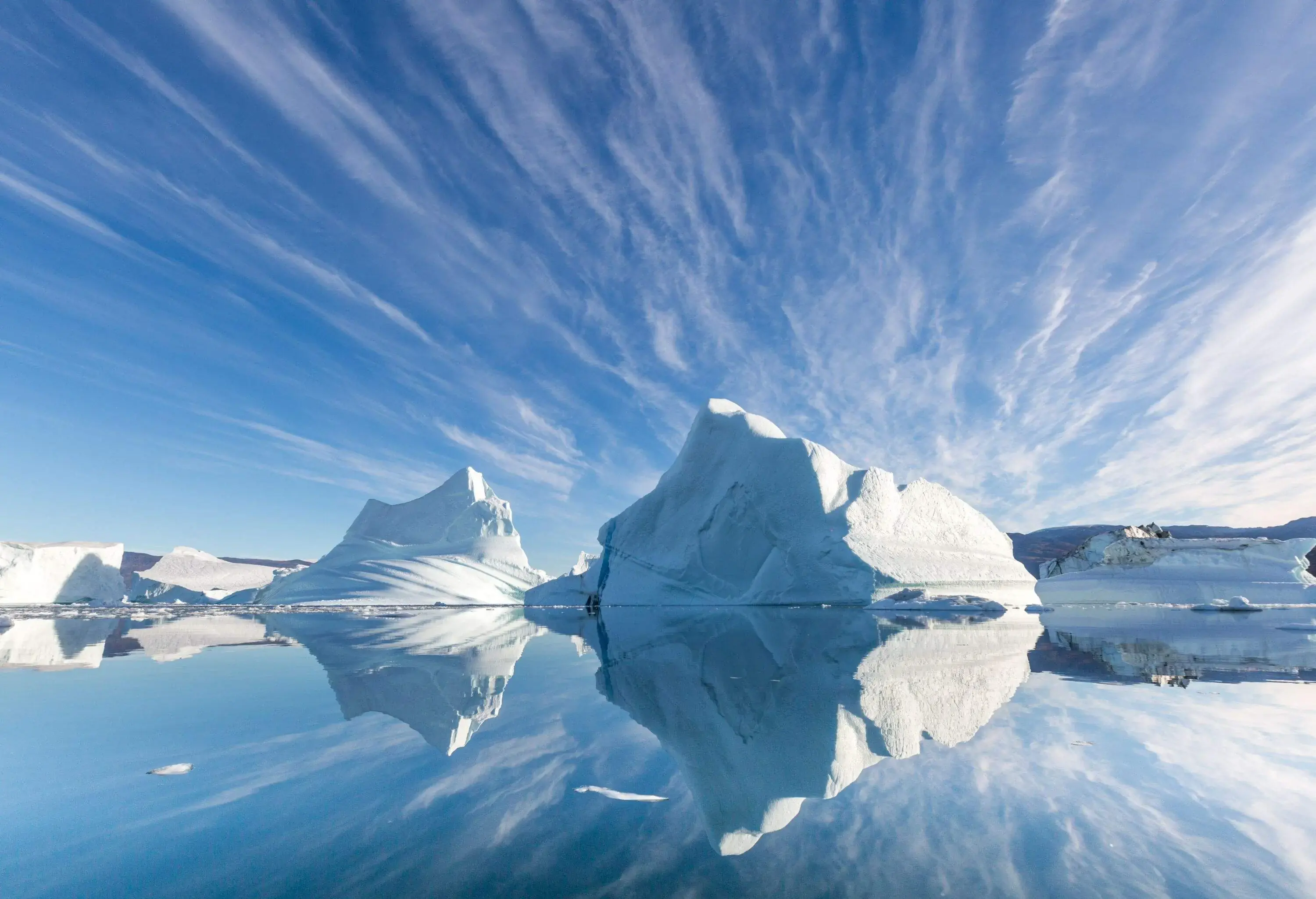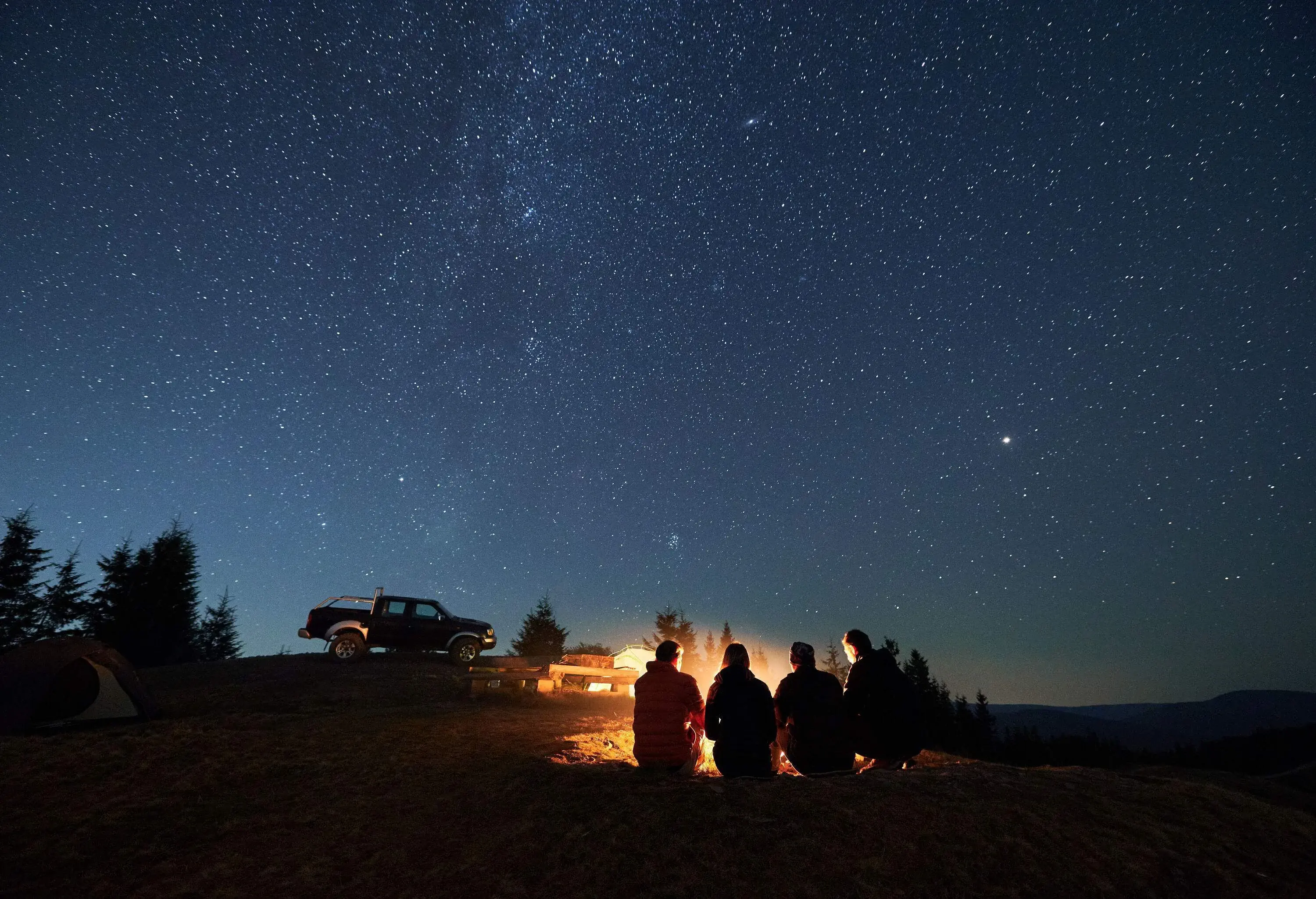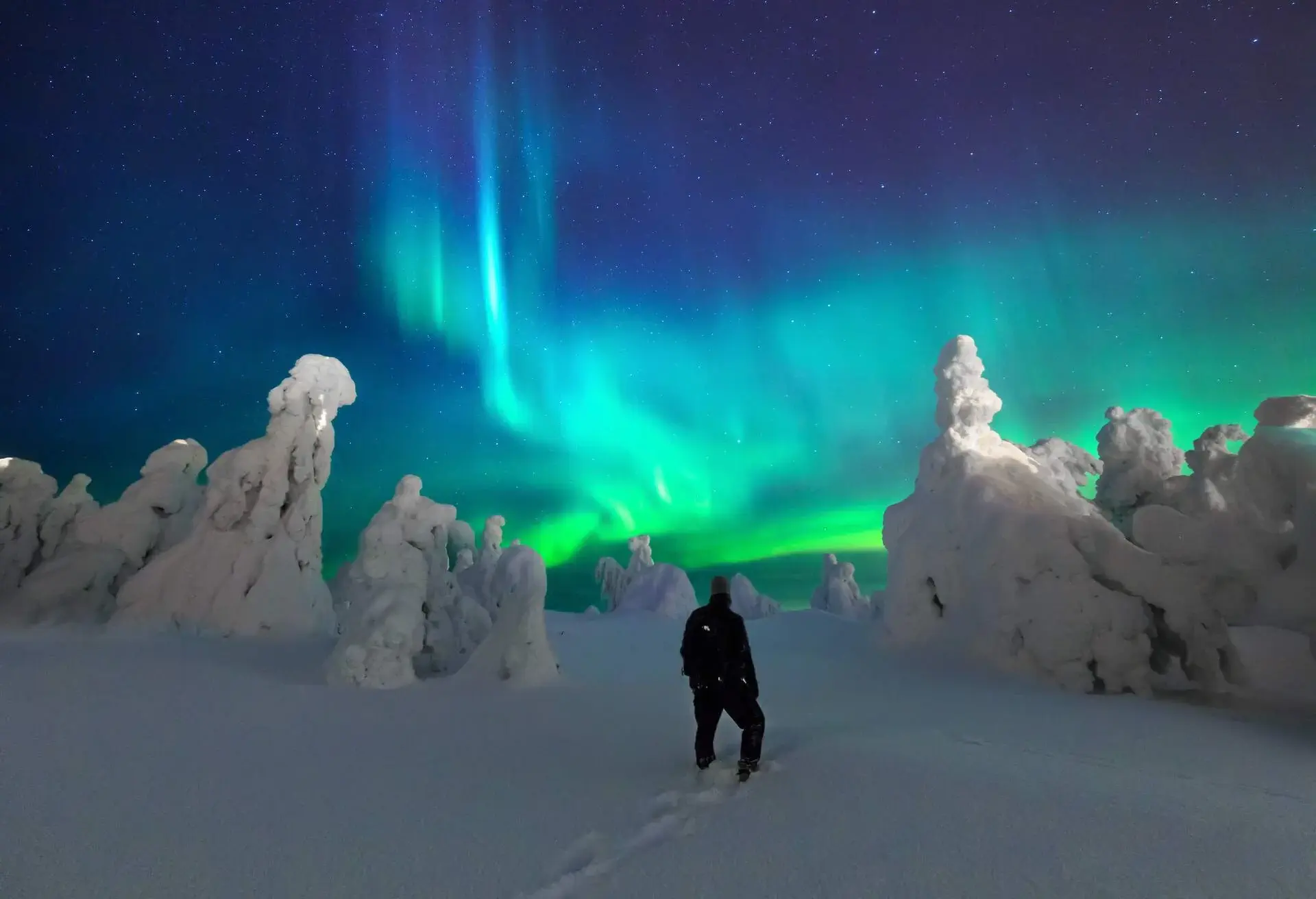Newsflash: eclipse trips are totally in. Just ask the millions who travelled to the path of totality this past spring. If setting out to see the next solar (or lunar) spectacle is on your bucket list, we put together the ultimate cheat sheet to help make it happen.
FYI: a solar eclipse occurs when the moon passes in front of the sun and puts the Earth in its shadow. A lunar eclipse happens when the Earth crosses the sun, leaving the moon in its shadow. Solar and lunar eclipses come in pairs about two weeks apart, in either order.
Then there’s the total eclipse: when the Earth, moon and sun perfectly align, casting either the sun or moon into the deepest shadows. Happening around every two-and-a-half years, this creates a spectacular momentary ring-of-fire effect called the umbra.
When should I book to see the eclipse?
The April 2024 total solar eclipse is estimated to have brought about 1 million visitors to Niagara Falls alone. It also received huge global media coverage, sparking real interest in the upcoming eclipses in 2025 and 2026. With their paths already charted, booking early is the only chance to find affordable accommodations and flights.
Annual solar eclipse visible from South America
When: 2 October, 2024
Book from: Now
Far flung destinations in Argentina and Chile, including the awesome Easter Island, are prime viewing spots. They’re also long-haul and expensive to get to. Book as soon as you can.
Total lunar eclipse visible in the Pacific, Americas, Western Europe and Western Africa
When: 14 March, 2025
Book from: December 2023 to January 2024
Your travel options cover an enormous window that bridges coastlines either side of the Atlantic. This gives you more time to book flights and hotels, whether international or domestic.
Total solar eclipse visible in Greenland, Iceland, Spain, Russia and part of Portugal
When: August 12th, 2026
Book from: Now to mid-2025
Europe's first solar eclipse in 27 years is already garnering huge interest. Covering a broad area, you can choose from destinations (and even cruises) aplenty—but don’t dawdle for too long.
The 5 best places to see the Annual Solar Eclipse on 2 October, 2024
The final eclipse of 2024 is a big one and South America is the best place to see it. The ring of fire is expected to last up to 7 minutes 25 seconds in some areas—around two-and-a-half minutes longer than the eclipse over North America in October 2023. That makes it worth travelling for.
Cochrane, Chile
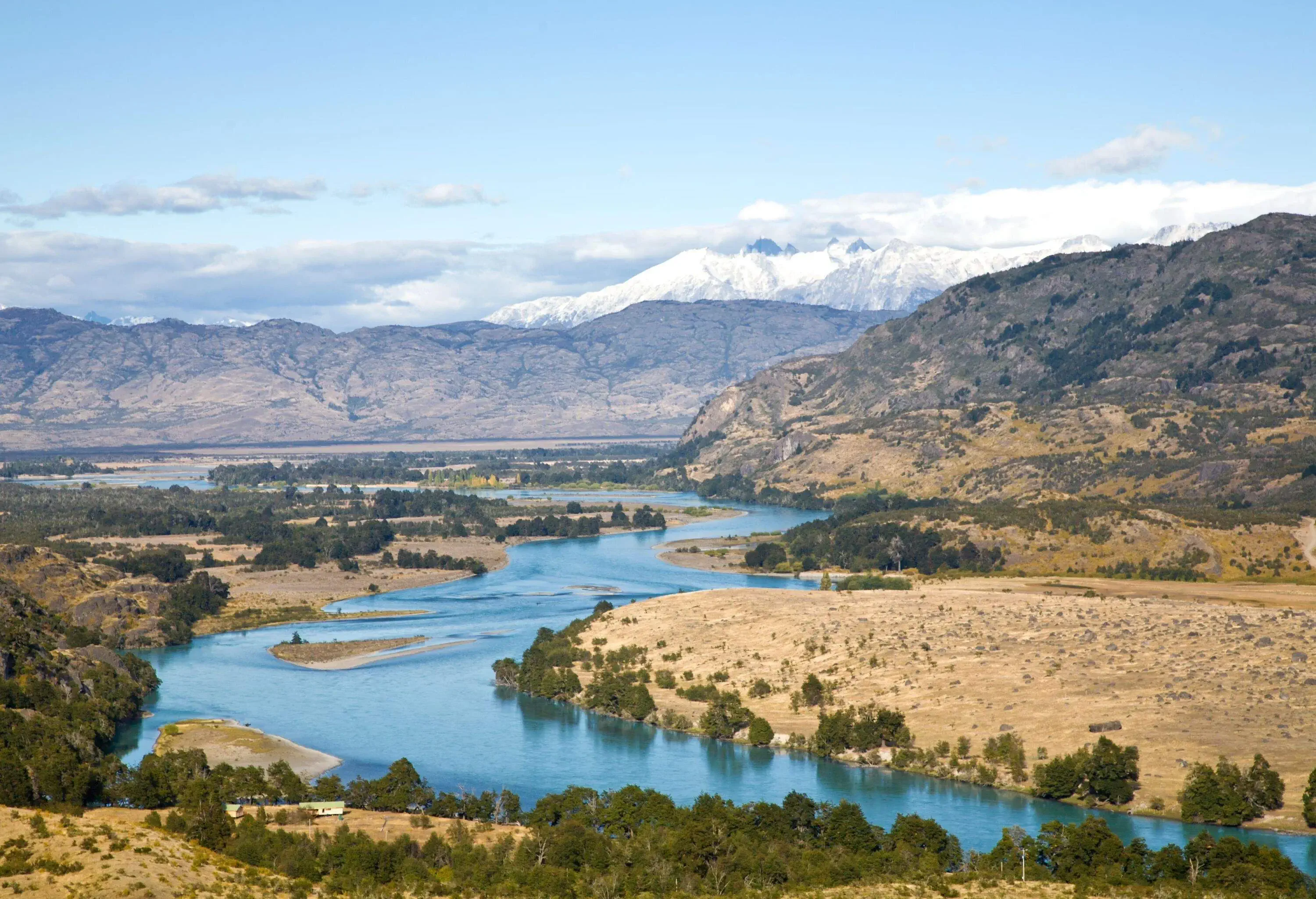
Starting 6:59 pm local time and peaking at 7:01 pm (when it will cover 94.3% of the sun), the 2024 solar eclipse will plunge the tiny town of Cochrane into near darkness. There are few better places to see it.
On the edge of Chile’s northern icefields, Cochrane is a natural paradise near the Baker River. Ample in activities, accommodation options and awe-striking landscapes, this Gaucho town is a must-visit.
Easter Island, Chile
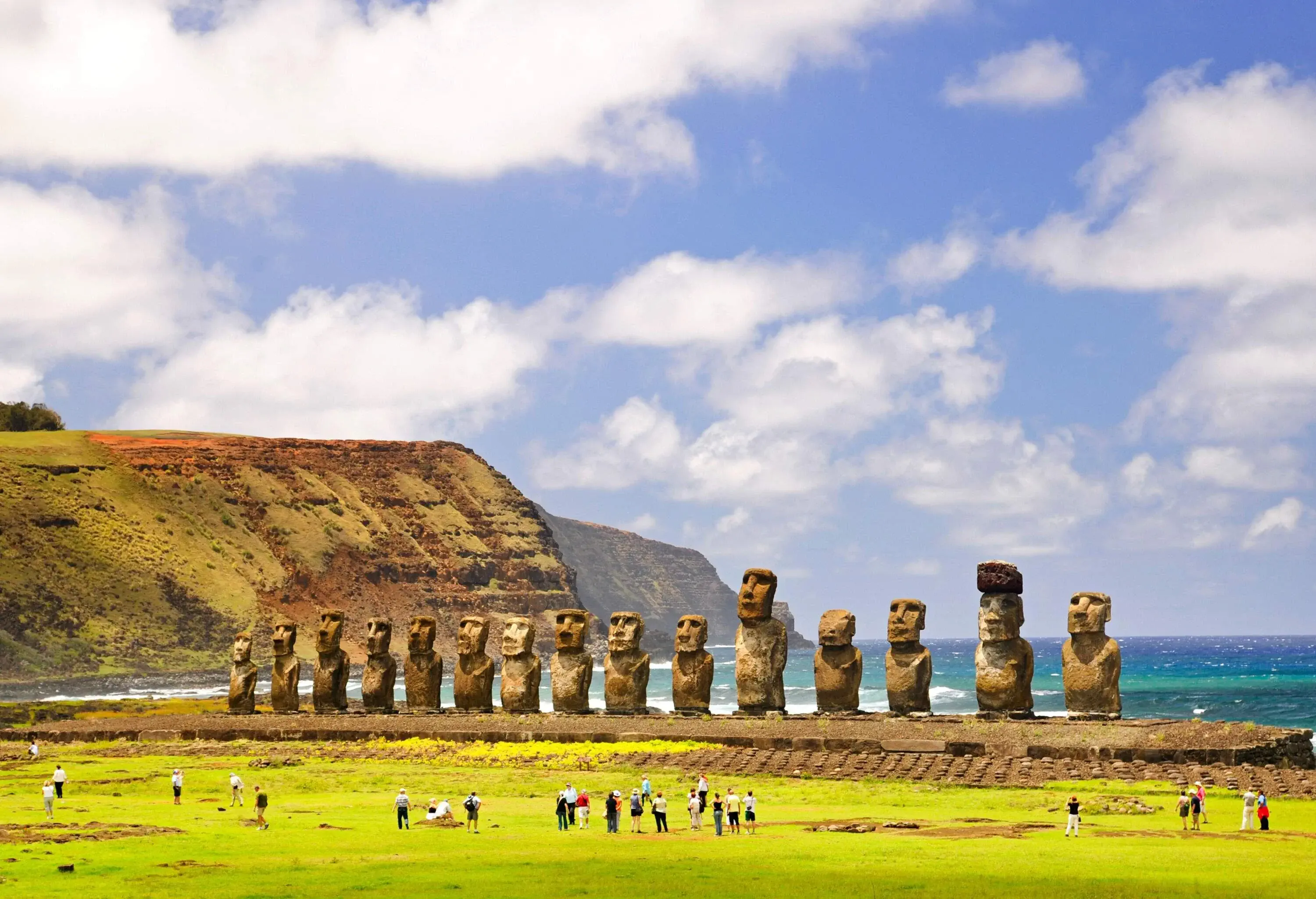
Bucket list event, meet bucket list destination. Sit back, relax and soak up the solar spectacle under a world-renowned moai statue. It all begins at 12:23 pm, with the ring of fire forming at 2:04 pm. The next solar eclipse won’t hit Easter Island for another 300 years—so step to it.
Perito Moreno National Park, Argentina
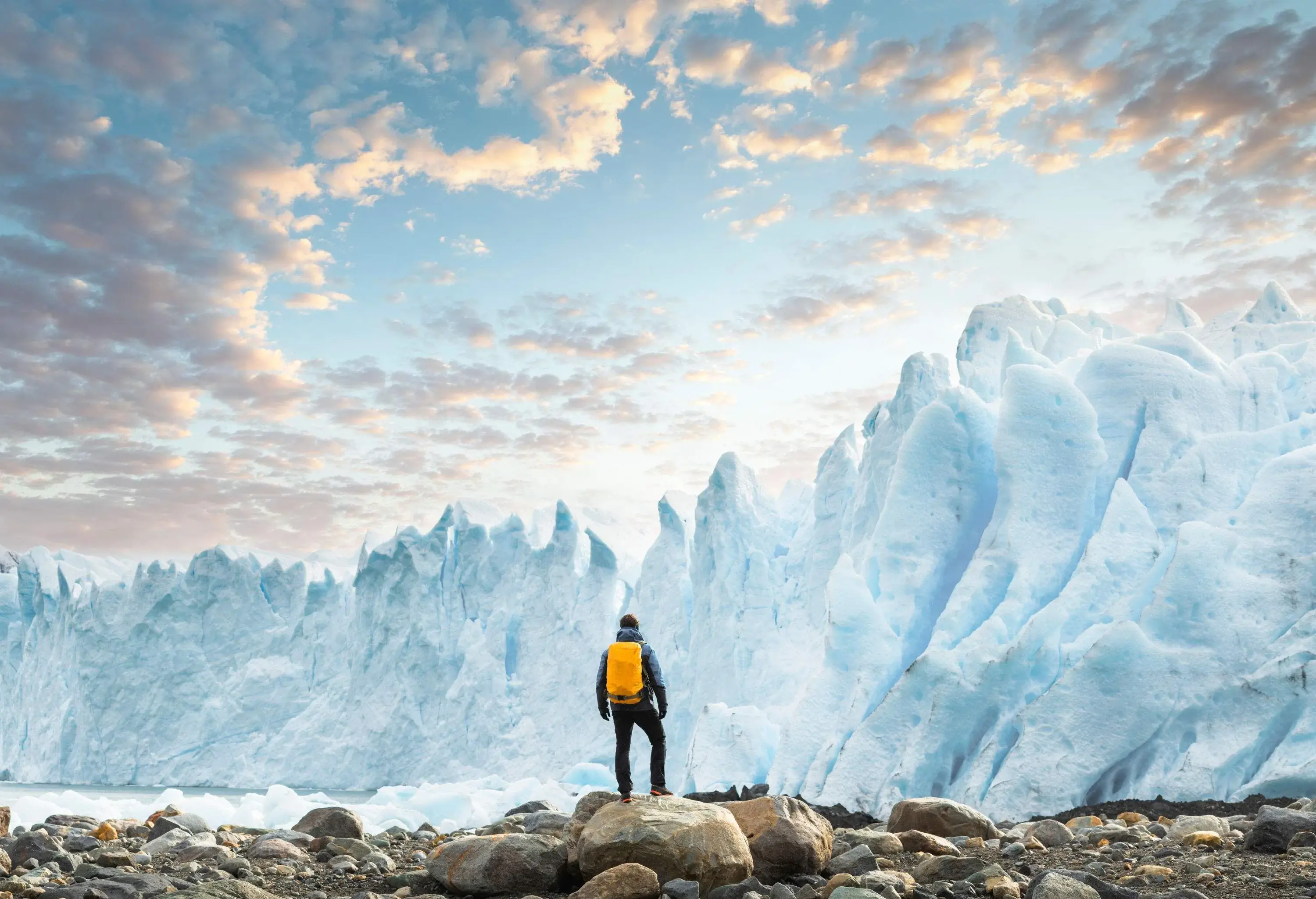
In Argentina’s Santa Cruz province on the mountainous border with Chile, Perito Moreno National park is a boundless and wild place. It also lies in the path of the eclipse, which will lend an otherworldly presence to its already overwhelming landscapes.
Head into the wilderness for the 3:59 pm start of the eclipse and ready yourself for 5:21 pm when the ring of fire will blaze for more than six minutes. The local weather can be temperamental, but conditions tend to be driest in the east.
Puerto Deseado, Argentina
To the east where Argentina meets the Atlantic, lies the picturesque fishing village of Puerto Deseado on the Deseado estuary. Surrounded by reserves, it has a rich and unique biodiversity that sets it apart even in Patagonia.
Here on 2 October, the sky is more likely to be clear than some inland regions. The eclipse, starting at 4:06 pm, will be low in the sky—around 20 degrees over Argentina’s northwest coast. The ring of fire will cast its spell at 5:27 pm and last around three-and-a-half minutes.
Puerto San Julián, Argentina
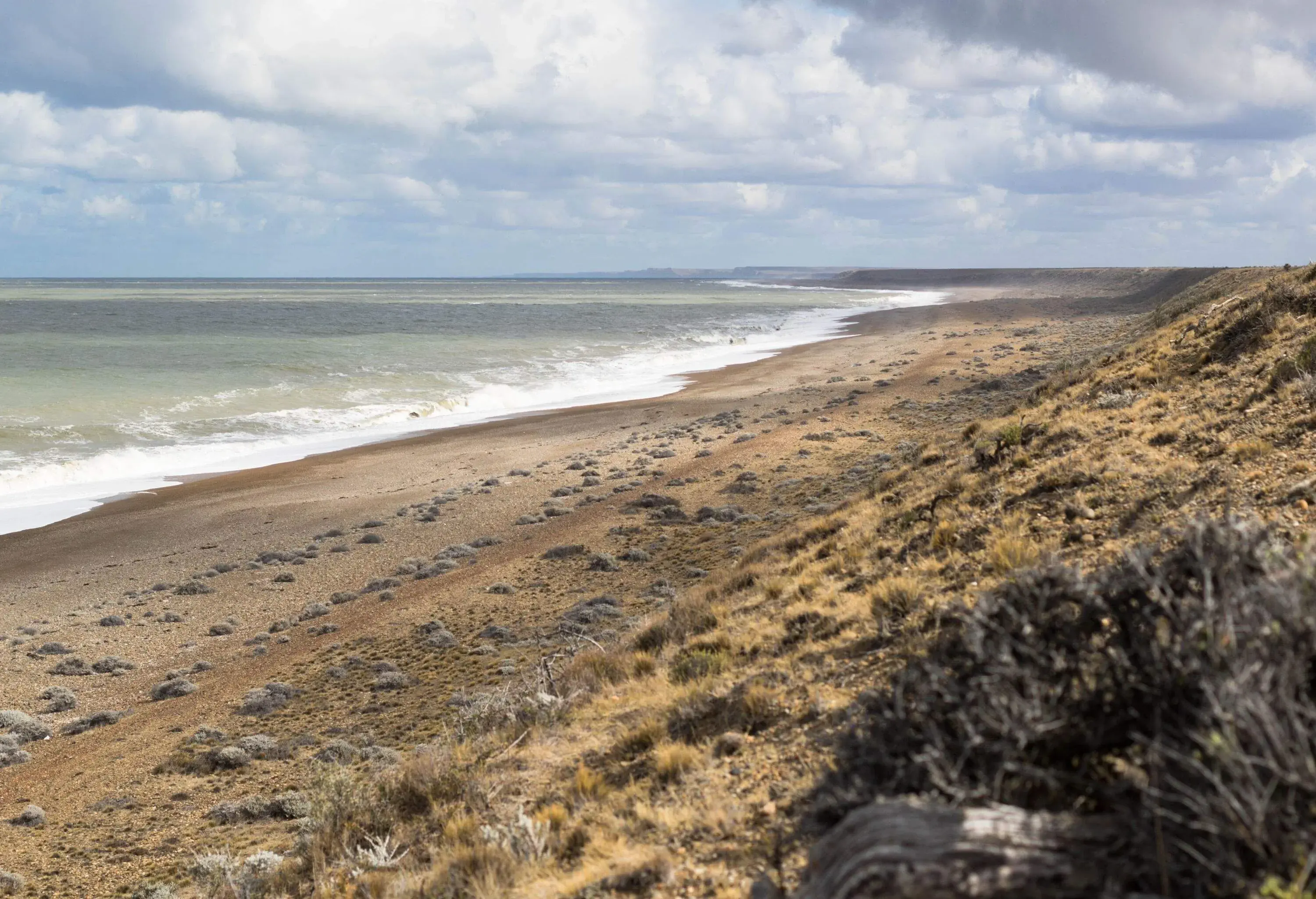
Hugging the Atlantic Coast over 300 km to the south, Puerto San Julián is a small town set in a natural harbour. It’s where Ferdinand Magellan wintered during his first 1520 circumnavigation of the world and called the local people Patagonians.
It’s also a versatile eclipse spot. Good roads make it easy to choose your viewpoint, whether you want to see it centreline or on the edge. The partial eclipse begins at 4:03 pm, with the ring of fire forming at 5:24p m and burning for a full five minutes and 12 seconds.
The 5 best places to see the Total Lunar Eclipse on 14 March, 2025
This far-reaching event will encompass North, Central and South America—and even cross the Pacific Ocean to the western fringes of Europe and Africa. From Canada to Ireland, Mexico to Morocco, your travel options to see the lunar eclipse in 2025 are as vast as the moon. Here are our top five.
Casablanca, Morocco
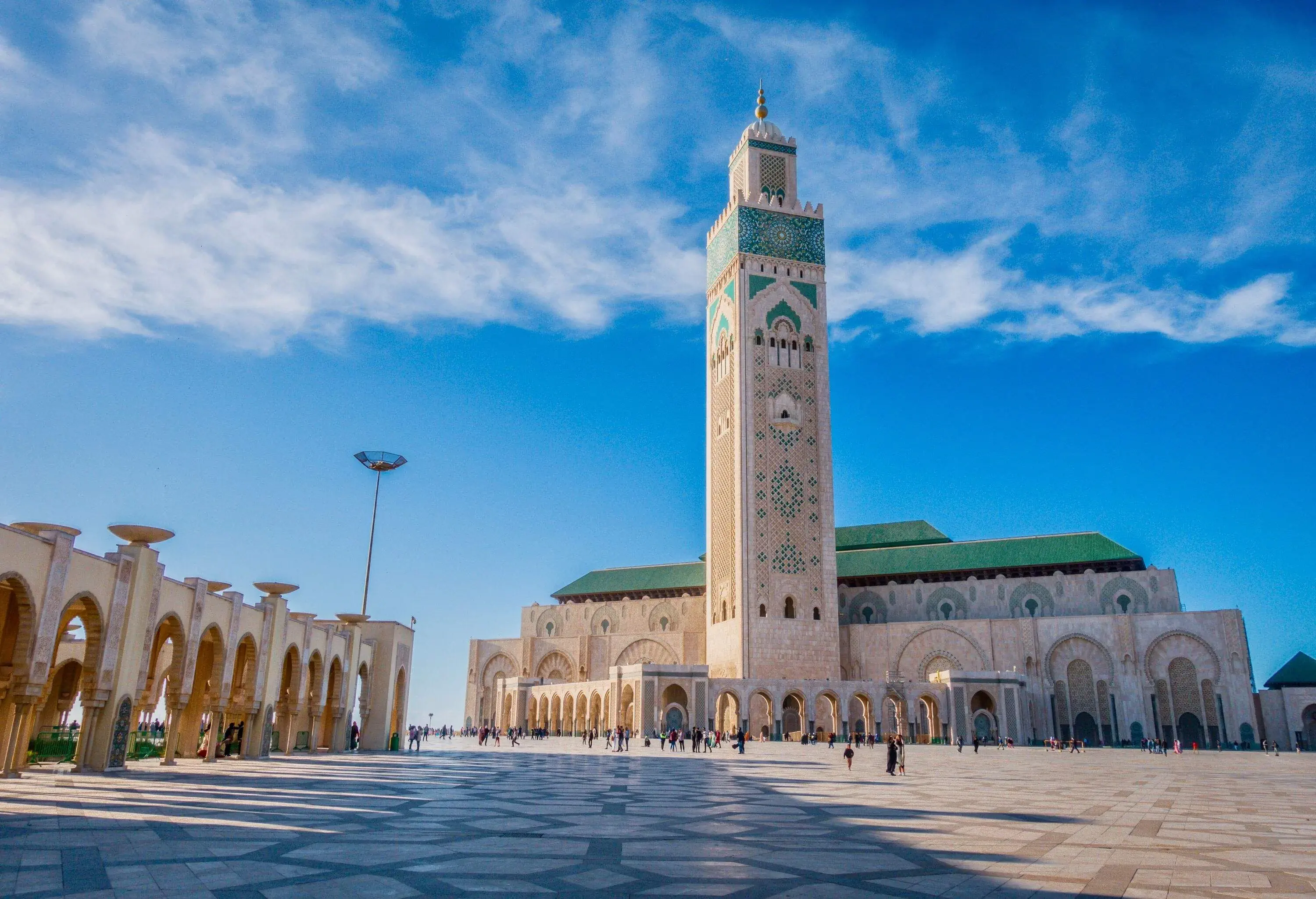
Morocco’s most famous city is also its most modern. A thriving port dressed in white, Casablanca’s skyline is dominated by the 210-metre-tall minaret of the Hassan II Mosque. This architectural masterpiece butts dramatically against the ocean, making it unique for eclipse viewing.
The partial eclipse will begin at 5:10 am with the moon just 19° above the horizon to the west. A little over an hour later at 6:26 am, the total eclipse begins, dipping the moon out of sight in a rare and extraordinary moonset.
New York City, New York
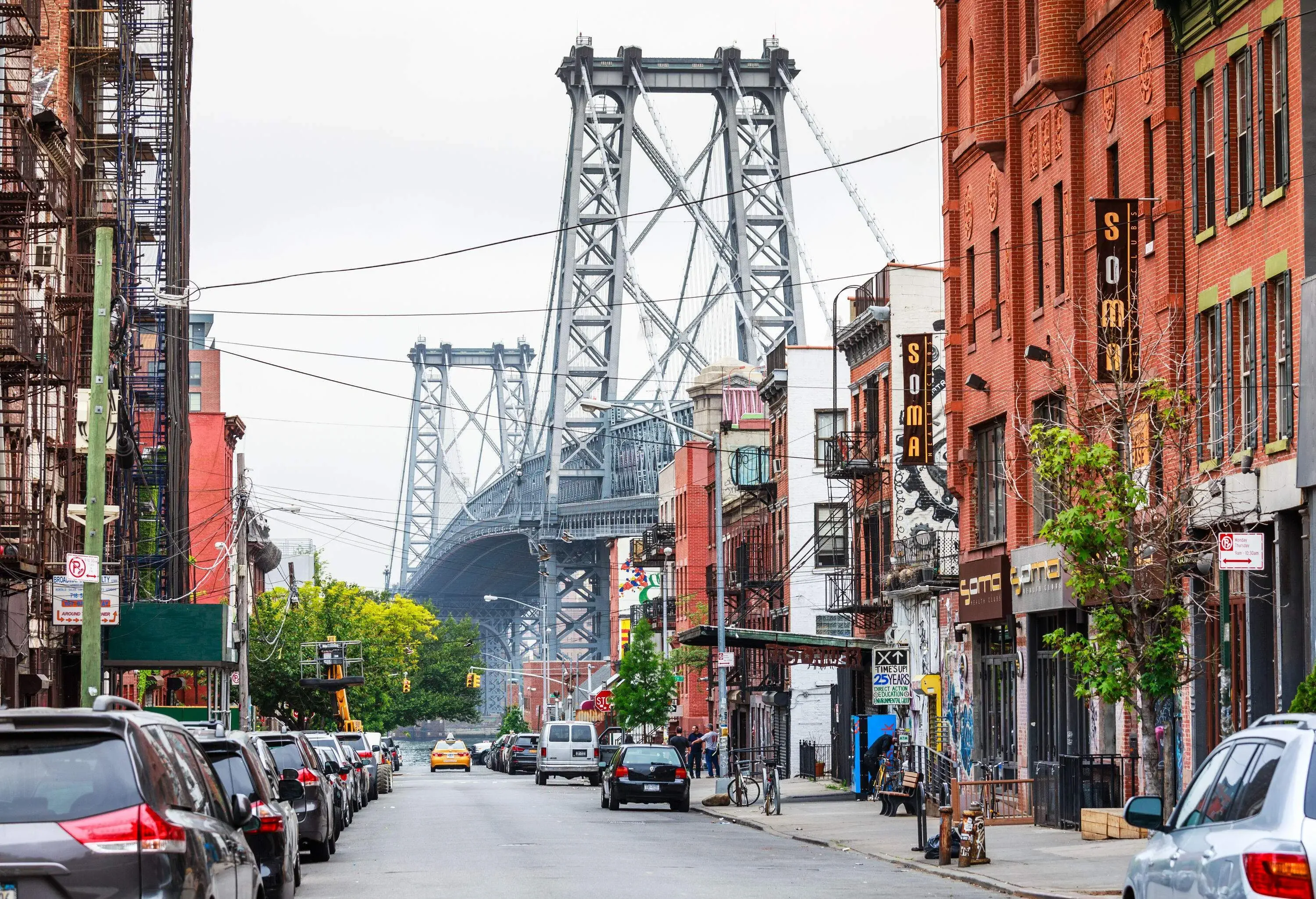
If you’re staying up all night to see the eclipse, do it in a place that stays up with you. Heading to the Big Apple to see a natural phenomenon may feel counterintuitive, but it also means you can make a night of it.
Come the 13th of March, head to Williamsburg for dinner and drinks. As midnight approaches, wander to the waterfront for unobstructed sky views (weather depending). The total eclipse begins at 2:26 am, bathing the moon blood red and lasting for just over an hour.
Honolulu, Hawaii
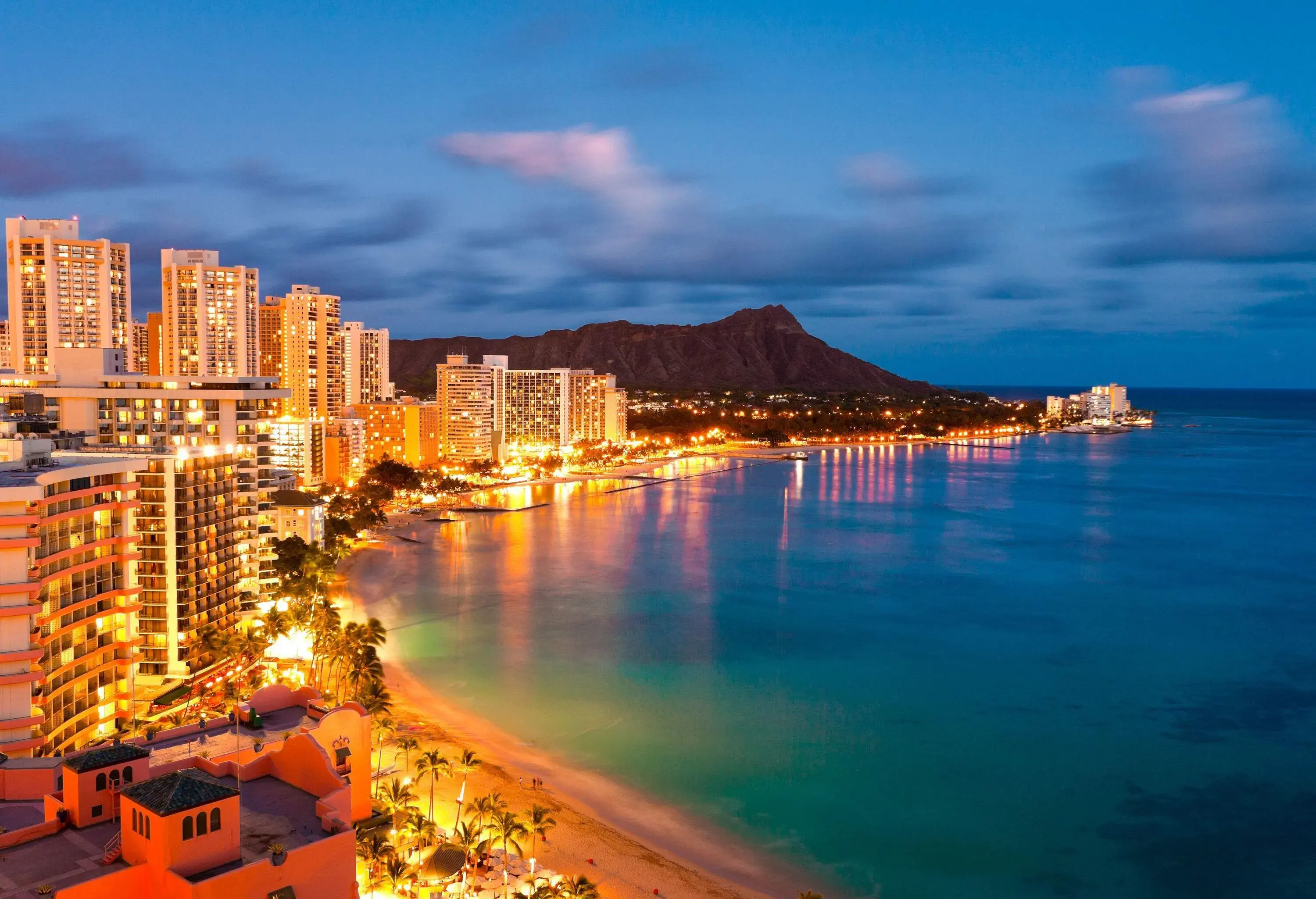
With balmy breezes, shreddable waves and humpbacks in eyeshot, it’s no wonder why March is high season in Honolulu. But the fun doesn’t have to end when the sun sets.
Chances are the skies will be clear above O‘ahu in March—perfect for lunar eclipse viewing. Stay in the city and join an eclipse party on Waikiki beach, or head inland on the Makapu‘u Lighthouse Trail and summit its unbeatable viewpoint.
Lisbon, Portugal
The seven hills of Lisbon are the cradle of the city, nourished by the Rio Tejo. Each has its own unique feel born over centuries of change and growth - and makes for a prime eclipse watchpoint.
March is shoulder season, meaning prices are low and temperatures are mild. Spend your days exploring or shading from the sun in the Alto and Alfama barrios. Come night, head to the beautifully developed waterfront for the lunar show.
Montréal, Quebec, Canada
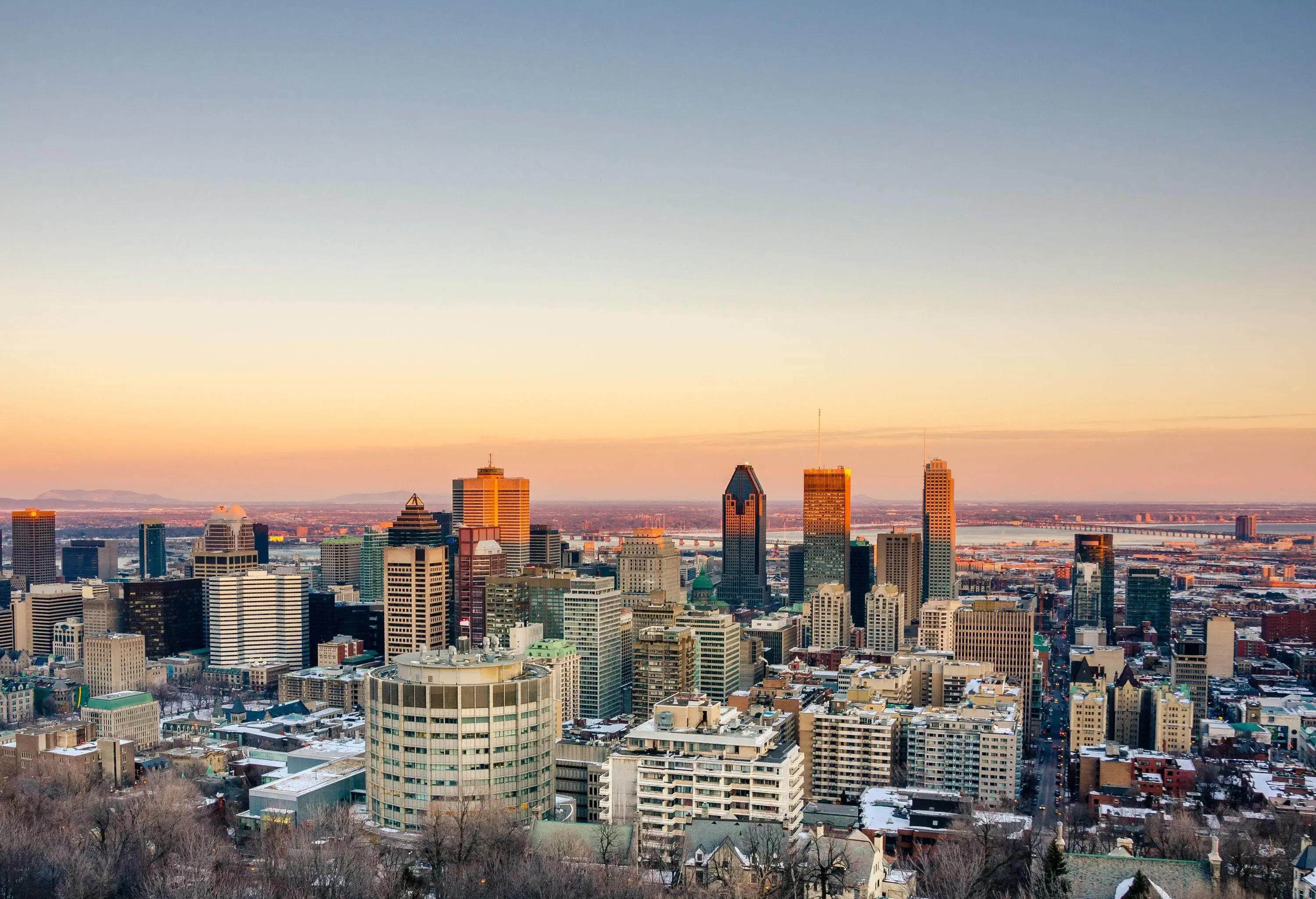
March may still be cold in Montréal but not too cold to spend a few night-time hours eclipse watching. And with winter turning to spring, there’s a good chance of crisp and clear skies.
One of the most walkable cities in North America, a stroll through Montréal feels like stepping onto the streets of Paris. You can't beat a visit to the Basilique Notre-Dame, a wander around the Parc du Mont-Royal, and fuelling yourself on patisseries and great coffee—key to keeping alert for the night-time spectacle.
The 5 best places to see the Total Solar Eclipse on 12 August, 2026
Europe’s last total solar eclipse was on the 11 of August, 1999, so excitement for its next is already high. But some destinations have had to wait longer. Iceland, for example, hasn’t seen a totality since 1954, while its capital’s last was in 1433.
Reykjavik, Iceland
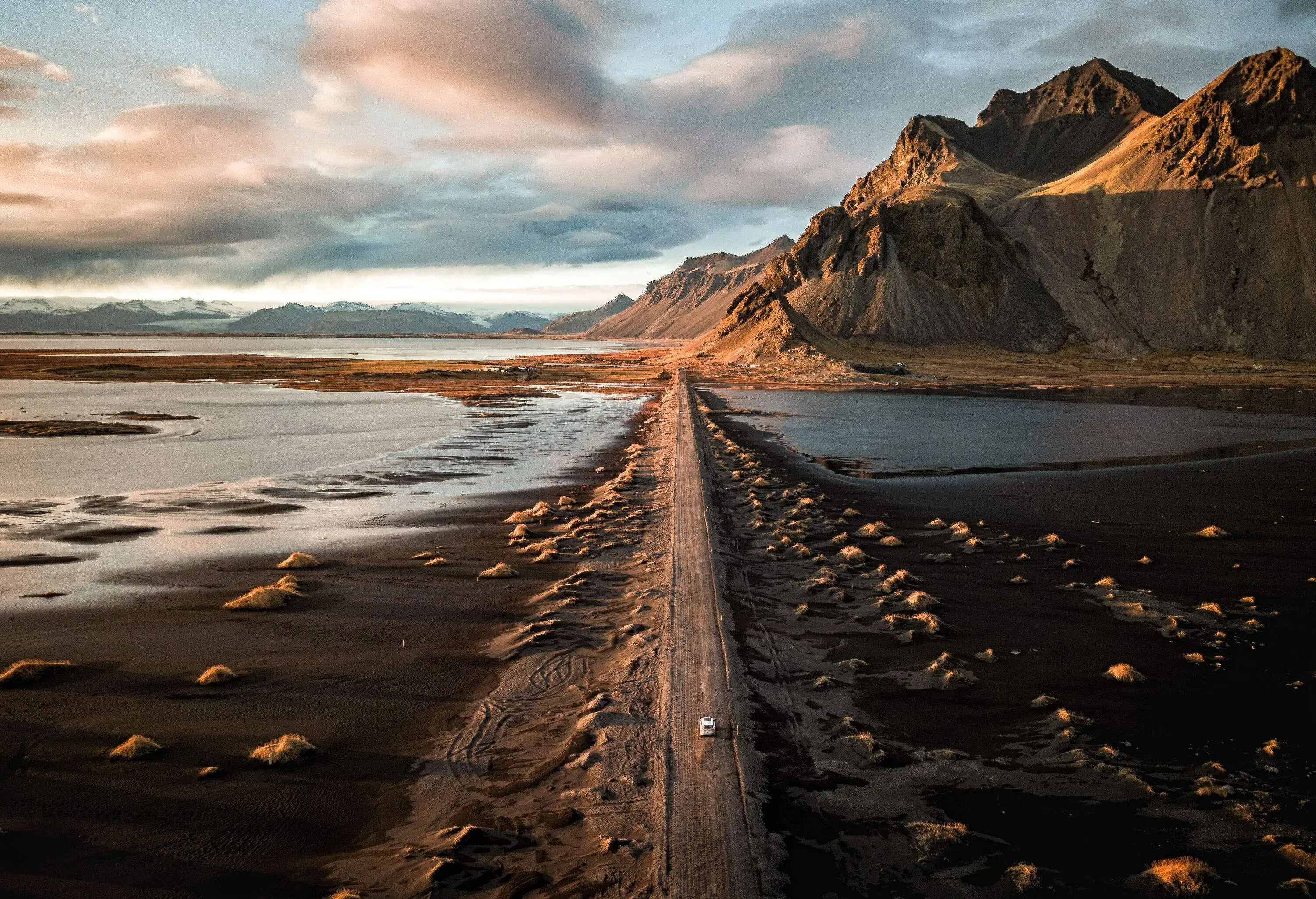
Road trip into Iceland’s hinterland and you might think you’re on the surface of the moon. For a quick return to Earth, there’s always Reykjavik.
Iceland will be the closest point to the maximum eclipse just outside Breiðafjörður Bay. Access to Reykjavik is easier though. From 5:48 pm, totality will flood the city with darkness for just over a minute.
If you’re lucky you may be able to check another astrotourism box. Late August marks the start of aurora season; the Northern Lights are not to be missed.
Snæfellsjökull National Park, Iceland
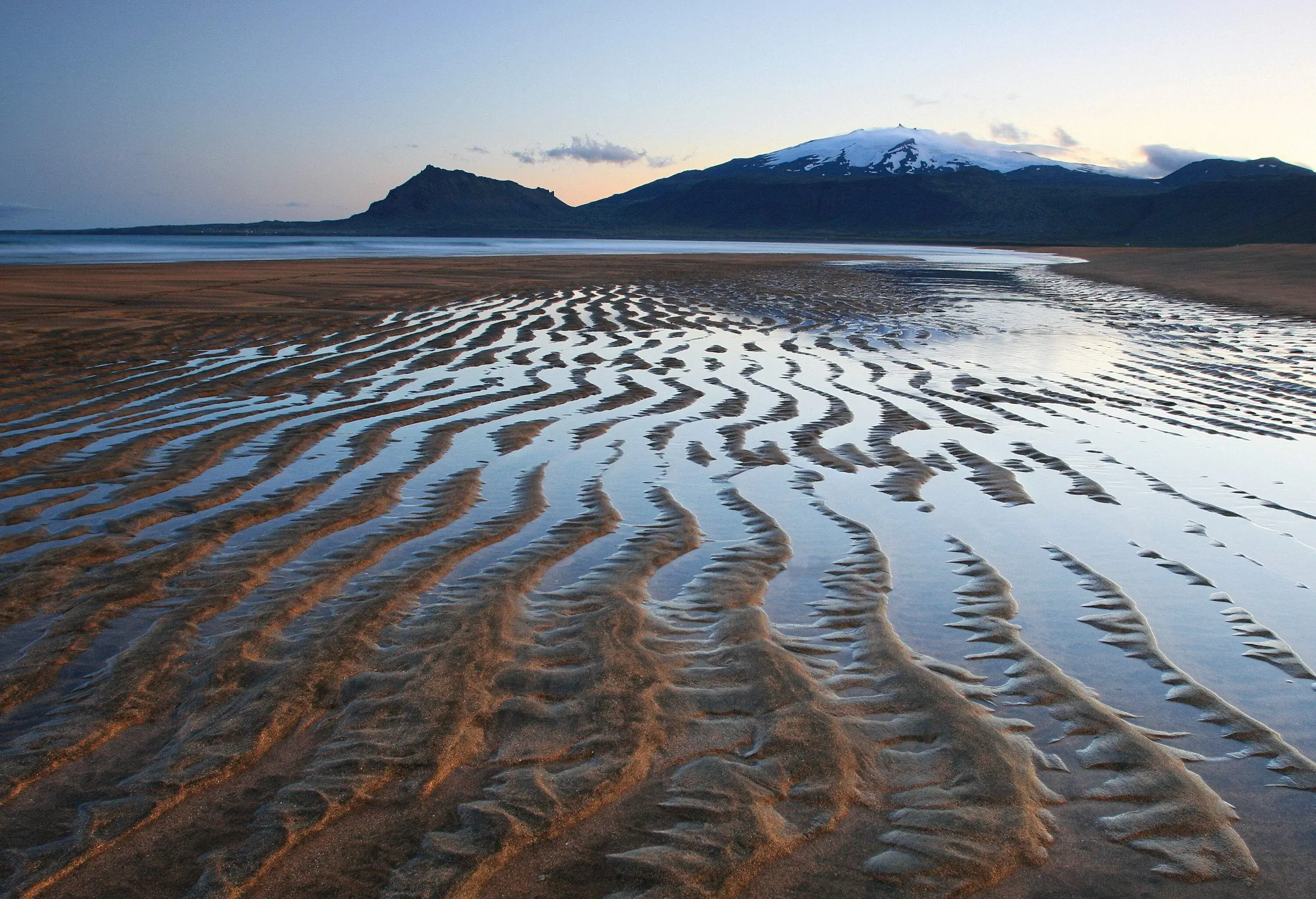
For the full out-of-this-world effect, head to the Snæfellsnes Peninsula and its incredible Snæfellsnesjökull National Park. A hotspot for Northern Light watching, expect it to be busy (although there’s plenty of room to spread out).
As volcanoes bubble, puffins grumble and black rock glistens, the eclipse is the perfect way to complete the scene. This is the longest period of totality you’ll find anywhere, lasting a full two minutes and ten seconds.
Scoresby Sund, Greenland
To Iceland’s west, gargantuan Greenland also sits under the 2026 total solar eclipse path. On its east coast high above the Arctic circle, Scoresby Sund is the world’s largest fjord system, reaching some 350 km inland.
What better way to witness totality than floating on a boat in one of its many iceberg-dotted bays? The eclipse will peak at 4:33 pm and last just under two minutes.
Palma de Mallorca, Spain
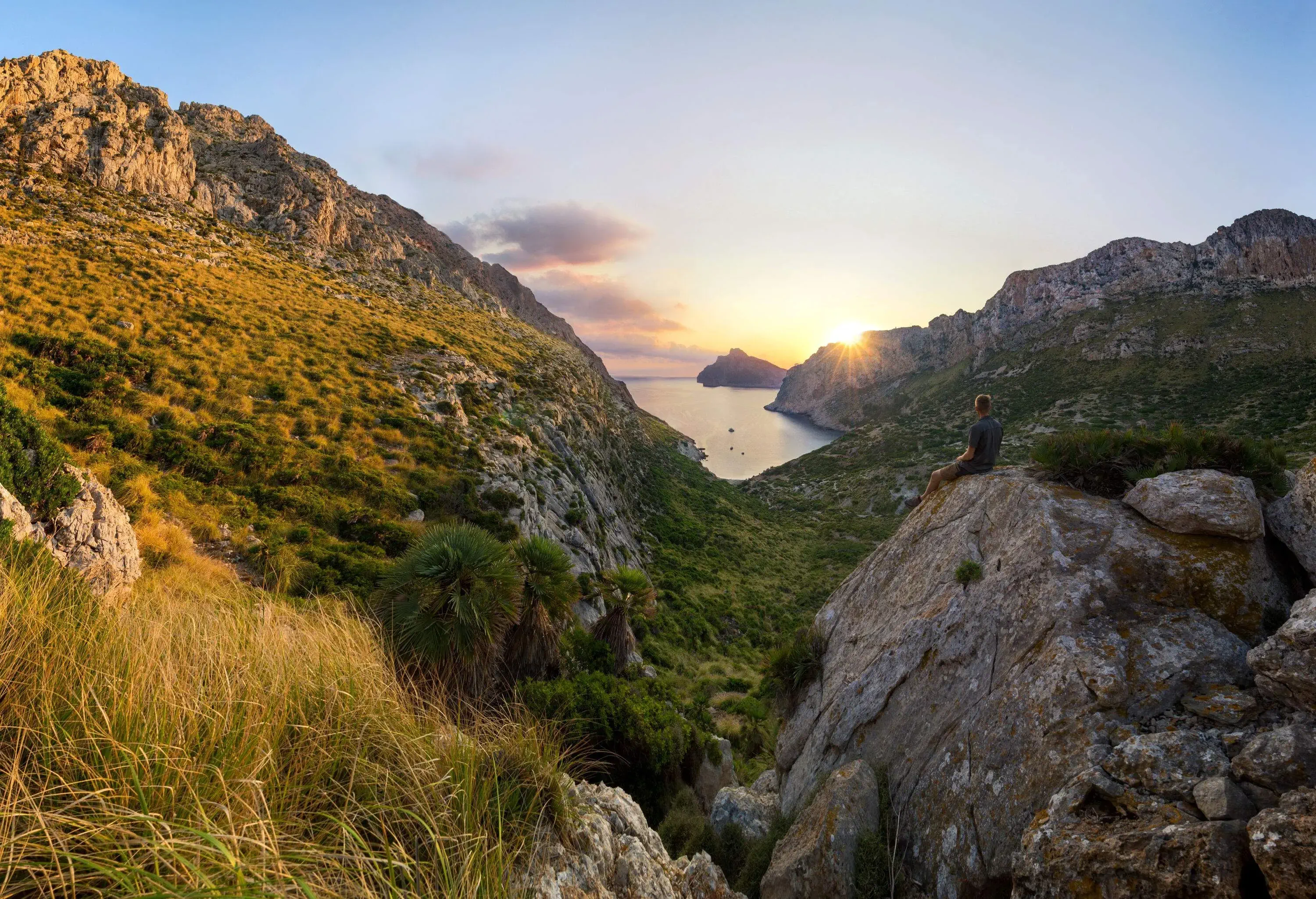
Mallorca is a perennial summer favourite and will be packed come eclipse day. There’s plenty of space to find the perfect spot to see it, be it beach, mountain or cliff top bar.
The skies will be as good as certain blue and cloudless. With cloudless, blue skies guaranteed, head to the peaks of the Serra de Tramuntana for the clearest view. The eclipse peaks at 8:31 pm with the sun just 2.5° above the horizon. As it sets it will move into a dramatic crescent before disappearing at 8:50 pm.
A Coruña, Spain
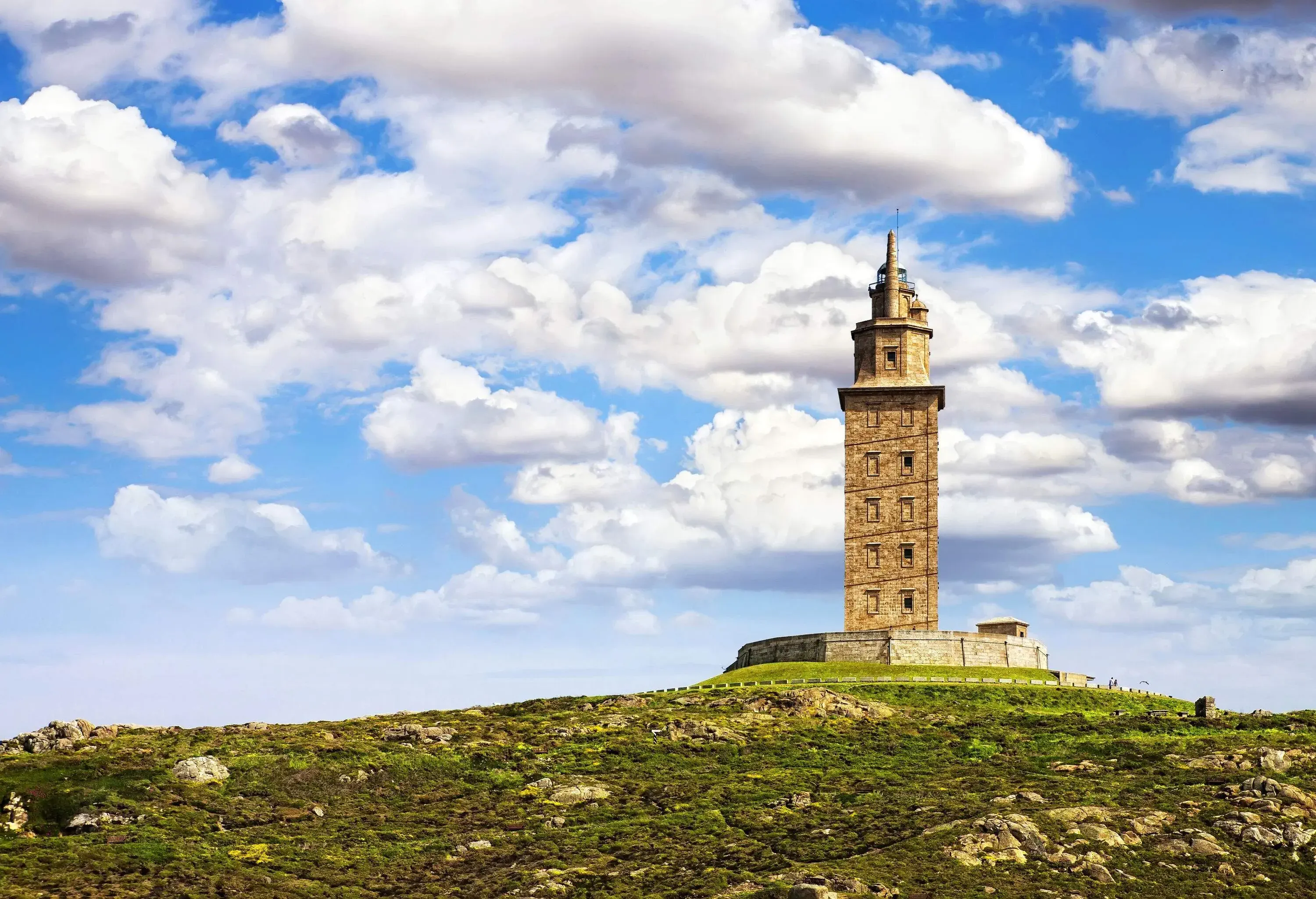
On Galicia’s northwestern corner, the port city of A Coruña is markedly different from Mallorca. Often overlooked by tourists, this cultural and commercial hub is the gateway to one of Spain’s most captivating regions.
A Coruña will see the highest solar eclipse in Spain, starting at 8:27 pm, 12° above the horizon. Head to the Torre de Hércules for uninterrupted views. This Roman-built lighthouse is reported to be the oldest in the world.



